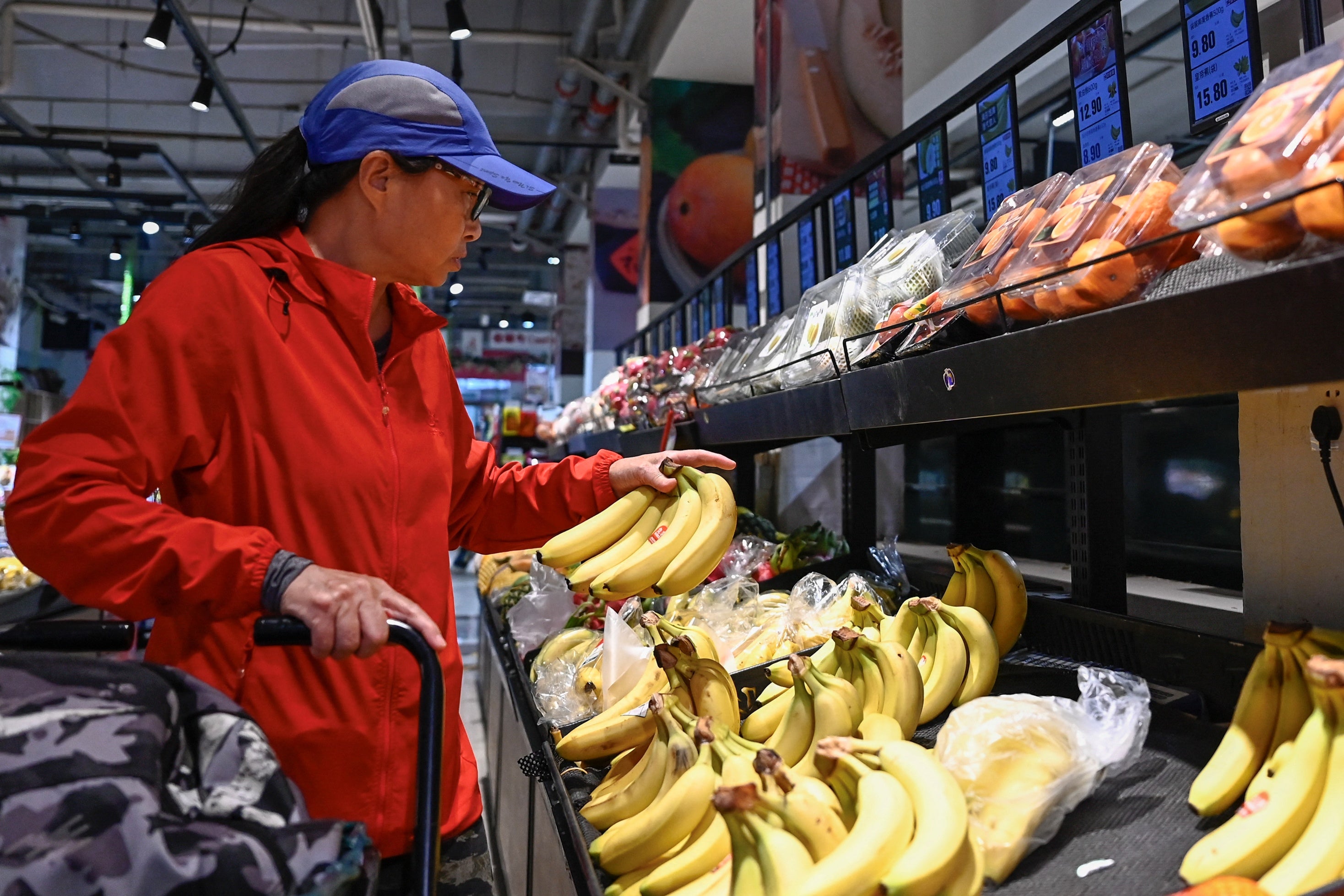Eating certain fruits can help control high blood pressure, a dangerous condition affecting nearly half of American adults that can result in heart disease and stroke.
Also known as hypertension, the condition was linked to more than 664,000 deaths in the U.S. in 2023. Still, only about one in four American adults have it under control, according to federal health authorities.
High blood pressure occurs when the force of blood against the wall of arteries is too high, increasing the risk of blood clot formation and artery-blocking plaque.
Medication is often prescribed to manage high blood pressure but a well-balanced diet has also been tied to lowering the risk.
“Diet and lifestyle can have a profound impact on blood pressure, and it’s worth as much as one or two pills,” Dr. R. Kannan Mutharasan, a cardiologist at Northwestern Medicine, said in a statement.

Bananas
Bananas are the world’s most popular fruit, packed with fiber and antioxidants. They are also loaded with potassium, an essential mineral that helps counteract sodium, relaxes blood vessels, and lowers blood pressure, according to the National Council on Aging.
“Potassium is a mineral that is vital for heart health, especially in terms of blood pressure management,” Colleen Spees, an associate professor of medical dietetics at Ohio State University Medical Center, said in a statement.
Eating just one banana provides 420 milligrams of potassium. That’s a sizable fraction of the 3,400 milligrams recommended for men and 2,600 milligrams recommended for women each day.
For a potassium-heavy meal, slice a banana and put it on top of some yogurt. “If you’re mixing a frozen banana with, say, Greek yogurt, frozen berries and other healthy ingredients, that’s great,” Spees said.
Kiwis
Eating two kiwis a day could help lower blood pressure, the National Council on Aging says. The tropical fruit is rich in vitamins and nutrients known as antioxidants that work to protect immune and metabolic health.
“A good source of vitamin C, kiwis can help reduce blood pressure in those with primary hypertension,” cardiologist Dr. David Sabgir told EatingWell. “Recent research has found that a daily serving of kiwi can reduce systolic blood pressure.”
Eat kiwis on their own as a snack, or mix them with other fruits to reap those rewards.
“To make the most of this superfruit, add kiwis to your lunch, make a fruit salad or blend them into a smoothie,” Imperial Center Family Medicine advises.
Cranberries
Cranberries, a holiday staple, are a good source of nitrates, molecules that can help relax blood vessels.
Drinking two cups of low-calorie cranberry juice a day has been linked to lower blood pressure levels and improved heart health, according to research.
Cranberries are also high in fiber, antioxidants, and have been linked to a lower risk of cancer because of their anti-inflammatory effects.
Adding dried cranberries to a salad or morning oatmeal might be able to help you lose weight. A cup of cranberries contains just 50 calories – 30 calories less than a cup of blueberries. The only drawback is that they’re not quite as sweet.
“I think you can start to get used to almost any flavor over time, but I think we may have this bias that all fruit needs to be sweet,” Maya Vadiveloo, an assistant professor at the University of Rhode Island, said in a statement. “It might just be that people have not really thought that much about cranberries, unless it’s around Thanksgiving.”
Apples
An apple a day may not keep you out of the doctor’s office, but it’s a good start. Antioxidants in apple peels help blood to flow smoothly, according to the Cleveland Clinic, and they can provide 150 milligrams of potassium.
“There is good data to show that the soluble fiber in apples can help prevent cholesterol from building up on artery walls. Apples contain a good amount of potassium, which can be beneficial for those who are watching their blood pressure,” Kathy McManus, director of the Department of Nutrition at Harvard-affiliated Brigham and Women’s Hospital, told Harvard Medical School.

Apples are also a great source of fiber and a hydrating snack. They’re made up of about 85 percent water and can help people fill up without a lot of calories.
“I often encourage my patients to combine a healthy carb with a healthy fat and protein by spreading peanut butter on an apple,” McManus said. “Low fat cheese also goes well with apple. Apples are great in salads and salsas, too.”
Tomatoes
Consuming about one large tomato a day slashed the risk for high blood pressure by more than a third, according to one 2023 study of older adults, who maintained a healthy lifestyle, in Spain.
Tomatoes’ high amounts of lycopene may be the reason. Lycopene is a plant chemical and powerful antioxidant that helps fight inflammation and molecules that damage cells,” according to Harvard Medical School. It’s also what gives tomatoes their red color.
The versatile fruit is also a good source of potassium, with one large tomato containing 431 milligrams. Putting tomatoes in a salad, on a sandwich, or roasted are all great ways to benefit.
“My favorite dishes include simple additions of tomatoes – freshly slicing a few with basil and mozzarella, then drizzling with olive oil and balsamic vinegar or slow roasting them in the oven and tossing them with other summer veggies, some pesto and pasta of choice,” registered dietitian Katryna Deogburn told Hartford HealthCare.


